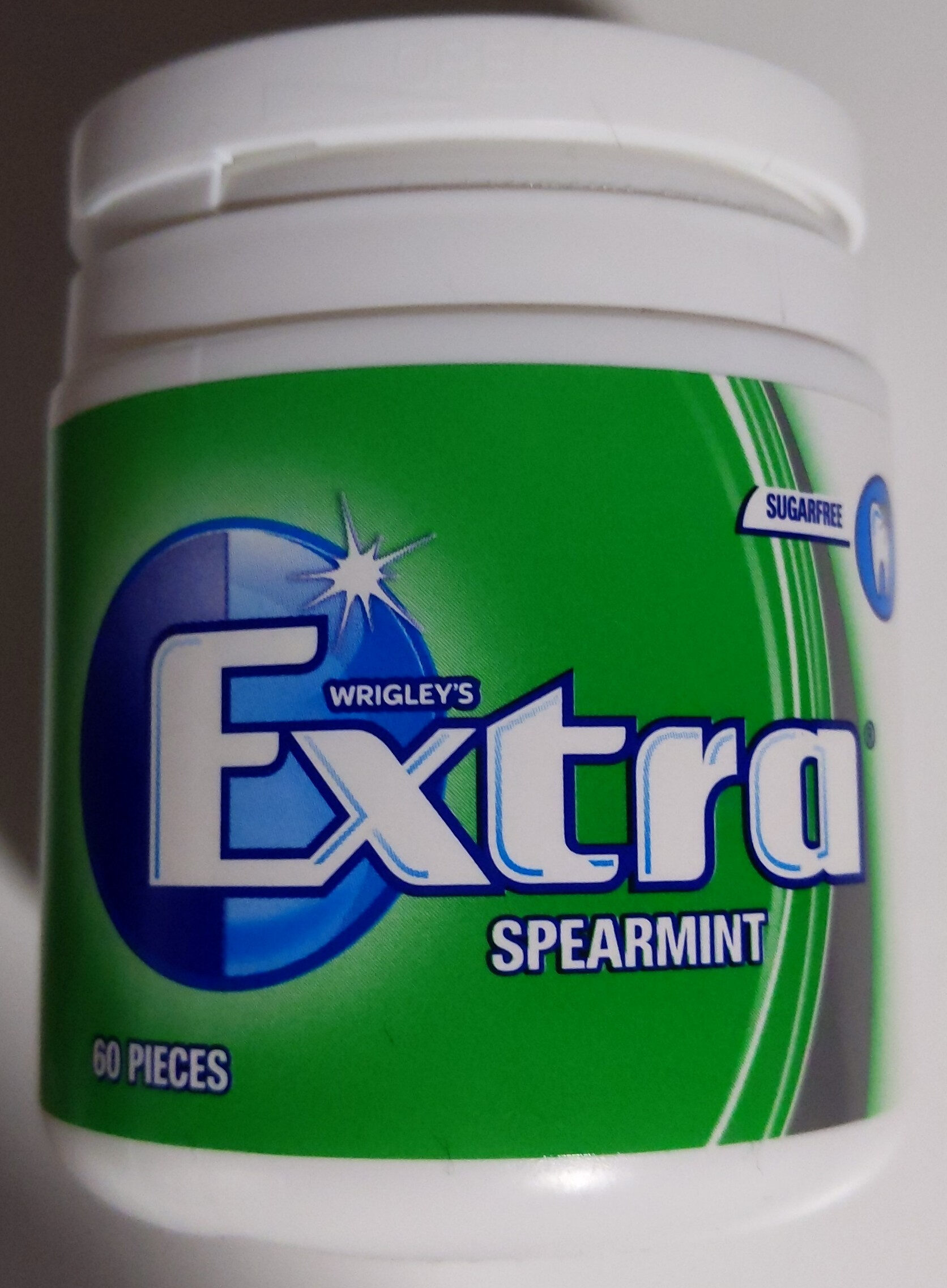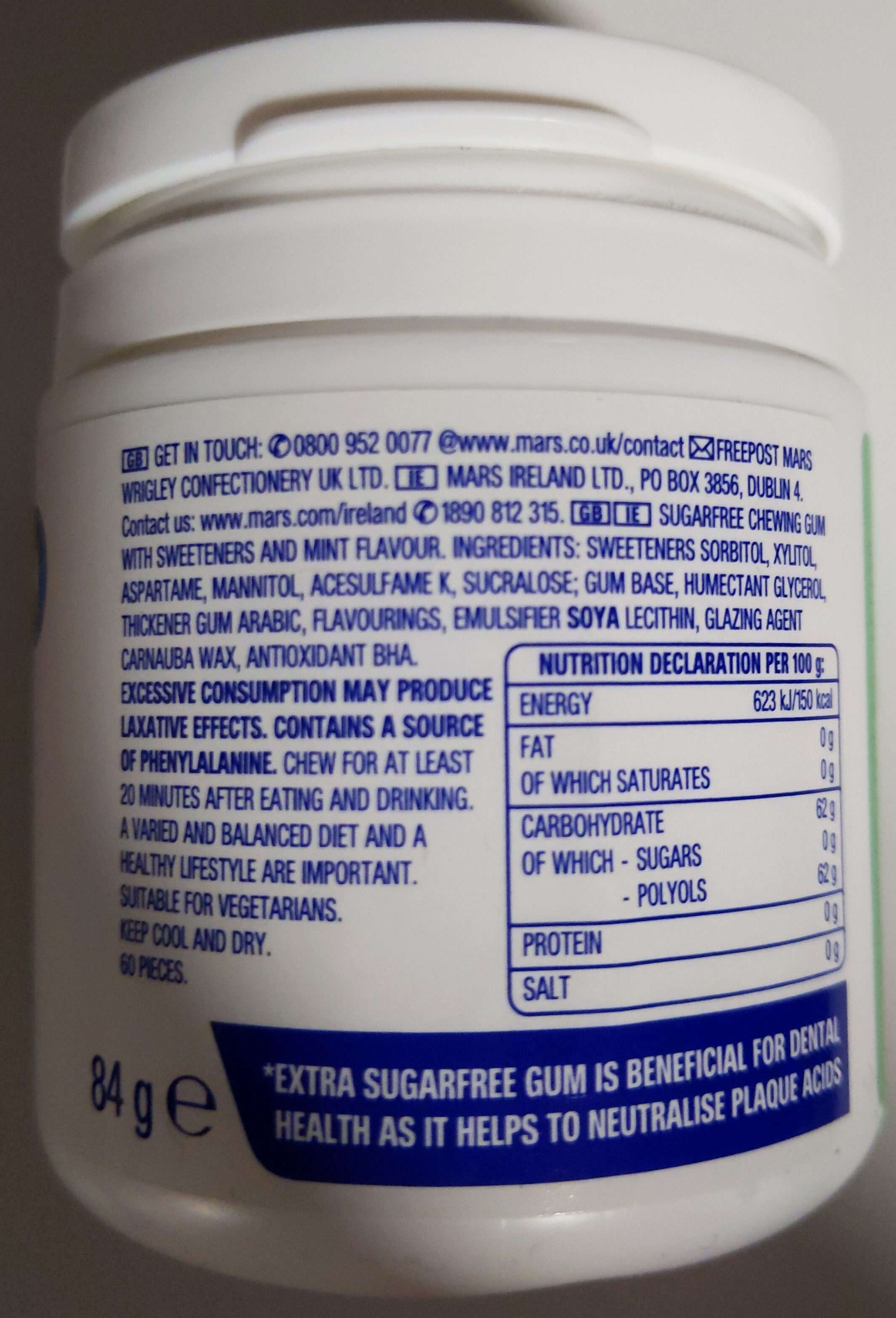Wrigleys Extra Spearmint 84g
This product page is not complete. You can help to complete it by editing it and adding more data from the photos we have, or by taking more photos using the app for Android or iPhone/iPad. Thank you!
×
Barcode: 4009900482776 (EAN / EAN-13)
Common name: Sugarfree chewing gum with sweeteners and mint flavour
Quantity: 84g
Packaging: Plastic, Hdpe-high-density-polyethylene, Hdpe-tub
Categories: Snacks, Sweet snacks, Confectioneries, Candies, Gummi candies, Chewing gum, Sugar-free chewing gum
Labels, certifications, awards: Low or no sugar, Vegetarian, Contains a source of phenylalanine, Excessive consumption can have laxative effects, No sugar, With sweeteners, Oral-health-foundation
Stores: Sainsbury's, Tesco
Countries where sold: France, United Kingdom
Matching with your preferences
Report a problem
Data sources
Product added on by rajn1991
Last edit of product page on by inf.
Product page also edited by alia, athitya777, baileysloan, barkasa, ebike, ecoscore-impact-estimator, elzbieta, foodless, halal-app-chakib, kiliweb, musarana, openfoodfacts-contributors, packbot, swipe-studio, vanligvis, yuka.H4JZJNvTOeMLBcHd7rIyhWfkKPjEPPF9O34IoQ, yuka.WTVnQ1M0a2RxY0FzeXNJMDhTemMvNE4zLzdtNFpreXpDOHhJSVE9PQ, yukafix.











